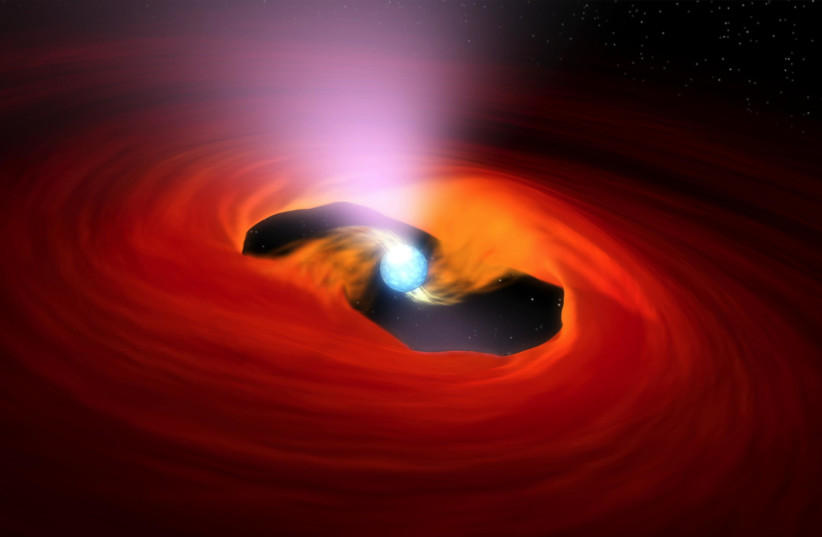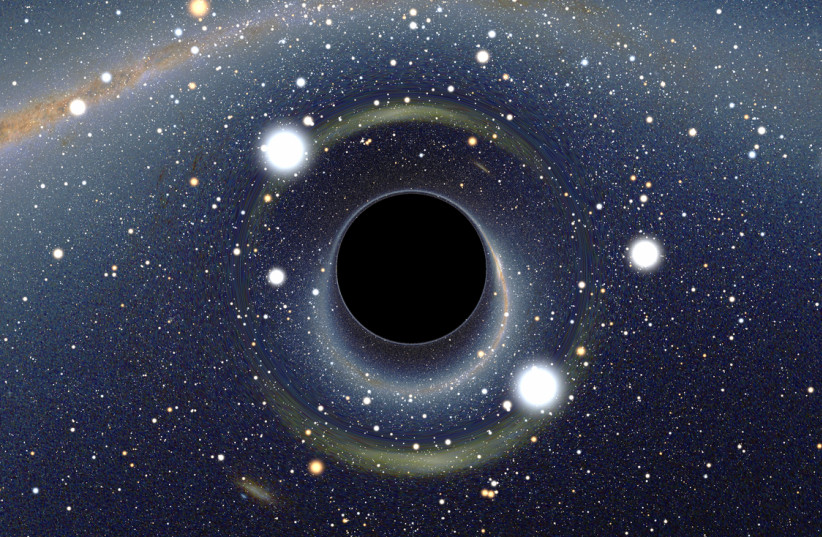Astronomers think they have determined the most massive neutron star ever discovered, a pulsar that is literally close to the limit of what should be possible, according to a recent study.
The neutron star in question is identified as PSR J0952–0607, which was first discovered in 2016, and is located in the Sextans constellation, between 3,200-5,700 light years away from Earth.
The findings of this study were published in the peer-reviewed academic periodical The Astrophysical Journal Letters.
<br>Of neutron stars and pulsars
A neutron star is essentially one of the end fates of an extremely large star.
Stars of all kinds are fueled by energy production in their cores, which sees energy made by nuclear fission fusing lighter elements to form heavier ones. It is this process that keeps the star hot, allowing gases to expand while simultaneously drawing its mass toward the core in a delicate gravitational balance.

When a star, specifically one between 10-25 solar masses or more, can no longer produce this energy, a process that takes millions or billions of years, it results in the star's collapse.
This results in a supernova blasting everything outward, while the intense gravity and mass of the core cause it to collapse in on itself and for ma smaller, compact and super dense stellar object: A neutron star.
This is not to be confused with a white dwarf star, which is very similar but is the result of the collapse of a much less-massive star.
Now, despite neutron stars having once been stars, they no longer generate heat since the processes of the cores no longer function. Of course, they are still hot, since they need to cool down, which will take place over a very long period of time. However, accretion and collisions can still see them grow larger.
But what makes neutron stars so fascinating is that they don't seem to be made up of normal atoms. Rather, the collapse of the star seems to have caused them to be formed entirely of neutrons, hence the name neutron star.
Another unique quality of neutron stars is that they still rotate. In fact, they rotate incredibly quickly, sometimes hundreds of times per second.
When rotating, some of these neutron stars actually release beams of electromagnetic radiation, which can be visible from Earth if pointed in our direction.
These neutron stars that emit these jets of radiation are known as pulsars. This is generally the best way to spot neutron stars, since they otherwise don't really emit much radiation.
Overall, there are thought to be several hundred million, if not a billion, of neutron stars in the Milky Way Galaxy alone.
<br>How massive is a neutron star?
Each neutron star still represents just a fraction of the mass of its original star, and they tend to measure just between one to three solar masses.
In addition, given how compact they are, neutron stars tend to not be very large. Rather, they might just measure 20 kilometers wide.
To put that in perspective, that's around the size of a city.
To put that even further perspective, that means there is something the size of a city that has the same mass as our Sun - or up to three times the size of that.
However, that limit is important. It's what astronomers have designated the Tolman–Oppenheimer–Volkoff limit, and says that a neutron star must be between just one to three solar masses, though the exact number is unclear and there are other factors to consider such as if the star is still spinning and so on.

So what happens if it exceeds this limit? That means it will collapse and condense even further, becoming even more dense. And that could mean forming a black hole. Of course, that isn't the only way black holes are formed, and it also isn't necessarily the only fate, with some scientists hypothesizing the existence of further stars such as quark stars, but that remains unclear.
But what's the most massive neutron star that we know of?
That's what the study sought to answer.
<br>The study
The neutron star in question is the pulsar PSR J0952−0607. When it was first discovered, it was already noted for how fast it spun. Current estimates say it rotates 707 times per second, one of the fastest neutron stars in the galaxy.
But what makes PSR J0952−0607 notable is how massive it is - roughly 2.35 solar masses - and the fact that it actually has grown even more massive.
The reason for this is because PSR J0952−0607 is what is known as a "black widow." This is the term used for a neutron star that is in a binary star system with another star - and then subsequently "eats" it.
This isn't too unprecedented, as binary neutron stars have been discovered before, as have black widow binary star systems.
Indeed, binary neutron stars and black widows are seen as promising sources of information on the possible growth of neutron stars.
But in order to ascertain just how much more massive PSR J0952−0607 became due to devouring its stellar companion, the researchers had to make use of the sensitive Keck 1 telescope in Hawai'i.
And the data they found showed them just how massive it is.
This is important, as it further supports the idea of what neutron stars are made of, something that is a separate and very complicated topic on its own.
But what is also interesting is how these findings shed light on one of the mysteries surrounding pulsars: The spinning.
<br>You spin me right round, like a pulsar, baby
The reason neutron stars spin originally is due to the conservation of angular momentum. However, that explanation only goes so far, only really explaining when they spin around once per second.
But what about the ones that spin even faster than that? What about the pulsars that spin and flash their electromagnetic radiation beams hundreds if not a thousand times per second?
The only explanation possible would seem to be that something had to come into contact with the neutron star, pushing it and making it spin faster. But how is that possible? After all, not every pulsar is in a binary system.
But the possible explanation is that for all of these extremely fast pulsars, they were never alone - at least, not at first.
The idea is that every single one of these extremely fast pulsars must have originally had a companion star, with that star's evolution and growth impacting the pulsar and making it move faster. Then it ends up getting absorbed, with this new material pushing it along even more, until they are left all alone.
Currently, PSR J0952-0607 is still a binary star technically, as its companion is still there, albeit very faintly, now roughly just 20 times the size of Jupiter and being heated up to temperatures hotter than the Sun. And the researchers think this is exactly what is happening, the black widow devouring its partner and possibly driving it to the point of complete obliteration, something author Alex Filippenko of University of California, Berkley dubs "cosmic ingratitude."
But the findings are just a small part of the effort the researchers have gone to in order to measure black widow pulsars, as well as other unique cases. The goal is to find more neutron stars pushing dangerously close to the black hole limit. But if they don't find any, then that could just mean they've already found the limit - after all, anything more massive would just simply have turned into a black hole.
